Paper Doll
Ask Paper Doll: Should I Organize My Space and Time with Color?
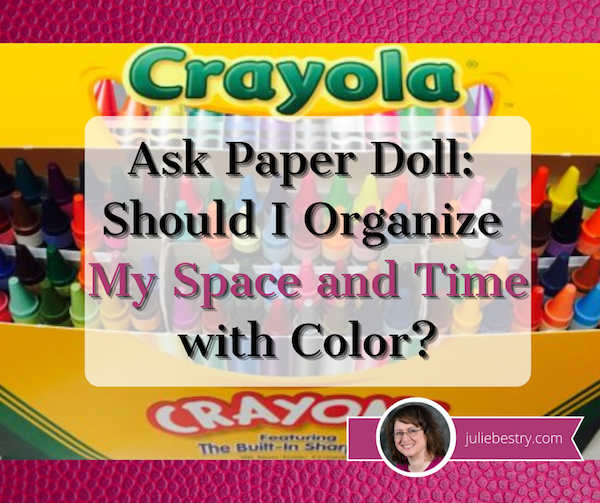
This is part of a recurring series of Ask Paper Doll posts where you can get your burning organizing questions answered by Paper Doll, a 20-year veteran professional organizer and amateur goofball.
Dear Paper Doll:
It’s only January and I’m already at a loss for motivation. I’ve been thinking about using color to organize my office and maybe my calendar, but the more I look at my options, the more overwhelmed I get. How can I organize by color and not constantly be tinkering with my systems and remembering what color goes where?
Signed,
Feeling grey with a case of the blues
Grey sky, grey streets, grey mood? Even if we weren’t in the second winter of a pandemic, January is a tough month to feel sparkly. We’re still nine weeks away from Daylight Saving Time, so our late afternoons are dark and gloomy. Plus, after the ongoing glow of holidays from late November through New Year’s Day, of course you’re feeling a loss of spark.
And yes, color is a great way to pump up the mood. If color weren’t so vital, Pantone wouldn’t be known worldwide for coming up with its color of the year. By the way, Paper Doll is a huge fan of this year’s color, Very Peri.

But organizing by color and organizing with color can be very different things.
ORGANIZING BY COLOR
Some people are enthusiastic about using color to organize everything in their homes, offices, and lives. Maybe they have a signature color that serves as a personal brand; others believe in color-coding and sorting everything by hue. Paper Doll isn’t necessarily keen on that. Using color to decide where something goes and with which it is grouped depends on the situation.
Organizing clothing or shoes by color? Sure. Imagine you have all of your long-sleeved shirts hanging in the closet, in roughly ROY-G-BIV color order, or group all your black pumps together, then the blue, then the red, and so-on within your collection of heels.
This will make it easy to recognize you’ve tipped the scale toward full-on goth when you’ve got 17 black turtlenecks, or may be mistaken for Dorothy if most of your shoes are ruby red. Sorting and ordering your clothes and shoes by color makes sense, but probably as a secondary sorting characteristic within clothing/shoe types.

Organizing your calendar by color? Absolutely! Whether you grab a selection of pretty markers to fill in your paper planner (medical appointments in red, billing or tax dates in green, social events in purple) or use the settings in Outlook, Gmail, or any other digital calendar, you can color-code to your heart’s delight.
And the best thing? If you select the wrong color, you don’t need white-out or an eraser to fix it. One little click, and you’re back in business!
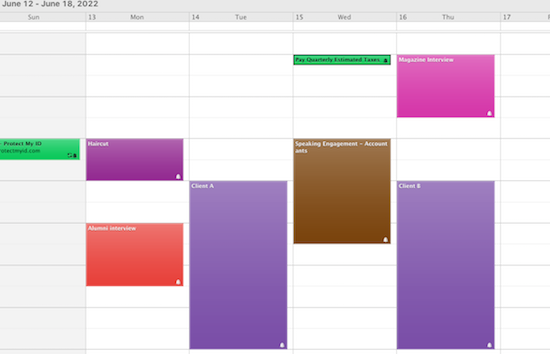
Organizing files by color? Mayyyyyyyybe. I hate to sound coy, but the effectiveness of a system based on color-coding files depends on the level of commitment of the user.
In the abstract, it can be great to organize your files (either tabbed folders or hanging folders) by color. Figure out what your overarching categories are, and assign colors to those categories, whether in your reference or action files. For example:
- Red folders — Urgent tasks or information you always need to get your hands on in a hurry
- Green folders — Financial information related to taxes, payable accounts, and investments
- Blue folders — Planning, like for vacations or work projects
- Yellow folders — Client information or class materials
- Purple folders — Creative tasks
and so on. Color (as we’ll see below) stirs emotions, creates enthusiasm and motivation, and triggers action. What could be better?
The problem isn’t with the system, per se, but with the users. If you let yourself run out of yellow folders just as you sign on a new client, what will you do? Are you likely to order new folders in that color scheme right away? If so, you’re set. If not, you may let a pile of papers related to that client languish in the corner of your desk, risking them getting mislaid or lost.
Plus, keeping many different boxes of colored tabbed folders can be expensive and get out of balance quickly. You may use three times as many purple folders as red ones and your red box may sit year after year, mostly untouched.
If you want to embrace color, there are a few other options beyond a full-on color-coding assault. You could:
- Pick your favorite color, and use those tabbed folders exclusively.
- Start with just two or three of your most used categories and pick colors to define each of those. You’ll still be using color as a sort of trigger or label, as above, but you won’t be going “whole hog,” at least not at the beginning.
- Use plain manilla tabbed folders, but pick a beloved color for hanging folders. (Because hanging folders hold tabbed folders, and can generally accommodate three-in-one, we don’t run out of them as quickly.) Traditional olive/army green hanging folders aren’t likely to cheer anyone up, and using a fun hanging folder uniformly through your filing system will brighten your mood without requiring you to keep up with a complex system.

(These purple Smead hanging folders are bright and bold, and are available in most Big Box stores and at Amazon for $17.89 for a box of 25.)
Organizing your spices by color? How experienced a chef are you that you could catch yourself before you added a visibly similar (but wrong) spice to a recipe? Ground nutmeg, cloves, and cinnamon look alike; but would you want to risk grabbing the wrong one and making iced nutmeg rolls or clove-raisin coffee cake?
Are you willing to mistake similarly-red cayenne pepper for paprika? Perhaps it’s better to group spices by the categories of usage (baking tasks vs. preparing meat/vegetables, etc.). SpiceAdvice has a nice Quick Reference Spice Chart sorted by usage categories.
Organizing your books by color? Oh, gracious. This question has stirred quite a bit of controversy over the last few years. I mean, there’s this person:
I feel like coordinating books by color is one of those things you either love or are wrong about. pic.twitter.com/U6GfIZLgnQ
— Jennifer Wright (@JenAshleyWright) July 15, 2020
I’d take umbrage, but I’m too busy worried about how cold her legs must be.
And then there’s Clea Shearer and Joanna Teplin from the Netflix program Get Organized with the Home Edit. They’re known for their passion for color-coding, and they did that with a few bookshelves on their show. But they were children’s books, and let’s face it, the way tiny humans pull books off shelves, it’s not like alphabetized books are going to stay that way. (Their background, at the above link, shows a full set of bookshelves for grownups arranged by color. I’m looking around for my fainting couch.)
Magazines have been rife with headlines in favor of organizing books by color. For example, Jezebel ran with a piece called Sorry, Color-Coded Bookshelves Look Good, while Slate stood up for the design-oriented folks with Arranging Your Books By Color Is Not a Moral Failure.
Of course, in this highly competitive media market, every online magazine’s job is to stir controversy and curry clicks. Thus, I suspect these headlines recognize that those of us who read may care more about the content of our books than using them as decor and are trying to drive some righteous indignation clicks to their sites.
But Paper Doll stands firmly in the NOPE category on organizing books by hue. The color of a book’s cover is about marketing; it was almost certainly chosen by a marketing team based on the designs in fashion for that genre during that season. The color may not even have been approved by the author or seem to make sense. I mean, even early versions of Alice Walker’s The Color Purple didn’t have a purple book cover or spine!
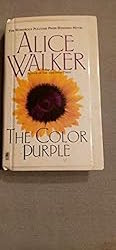 I’m a practical person. I believe that function should always come before form. A gorgeous outfit that doesn’t cover all your fleshy bits and gives you frostbite? Nuh-uh. A bookshelf that requires you to remember the color of the cover vs. letting you just walk over to peruse the category (fiction? organizing? recipes?) or authors? I can’t countenance that.
I’m a practical person. I believe that function should always come before form. A gorgeous outfit that doesn’t cover all your fleshy bits and gives you frostbite? Nuh-uh. A bookshelf that requires you to remember the color of the cover vs. letting you just walk over to peruse the category (fiction? organizing? recipes?) or authors? I can’t countenance that.
I’m not saying you can’t do it; I’m saying I can’t advise it.
And that’s because, as a professional organizer, my role is to help you live a more organized and productive life. Sure, I’ll leave your space looking better than it did before, but my reason for being in your space is to leave it working better than it did before.
ORGANIZING WITH COLOR
So, what’s the difference?
Organizing by color requires creating a system. With clothes or shoes, it might just be ROY-G-BIV and keeping things in order. When you put away your clothes, as you approach with a freshly-laundered shirts on hangers, you’ll be able to put away each item in the general color order. It’s your closet, so you don’t have to be too persnickety unless Vogue is coming to do a photo layout of your walk-in, in which case, good for you!
With file folders, as described above, organizing by color requires a stricter system. In effect, you’re deciding, up front, what all of your categories will be and assigning colors to those categories. You have to be willing to stop, each time you create a folder, to consider what category the contents of the folder belong to, and select that color every time. If you’re comfortable with that, then you have my blessing. I just don’t want to see you get stressed out.
You also have to be relatively sure that you’ll “feel” this association going forward (unless you’re just having fun and don’t care whether there’s a cognitive connection between your colors and your categories); if you soon realize that you hate the color orange but have assigned orange to your accounts payable, you might stop filing your paid bills or (eek!) avoid paying them altogether.
Organizing by color can be great, and I’m absolutely in favorite of it, as long as you, as an individual, feel comfortable sticking to a system. If not, that’s OK. There are still magnificent ways to organize your life with color, without adhering to strict or narrow categories.
Organizing with color lets you pick functional objects that add a pop of color but don’t require a lot of mental or physical effort to maintain.
It’s more thematic than systematic.
It’s sort of how we talked about about goals and resolutions vs. picking a word of the year. (If you haven’t read Review & Renew for 2022: Resolutions, Goals, and Words of the Year, this is a great time to help you get back on that motivation kick!) Goals — and the habits we embrace to achieve them — are like the systems for organizing by color; a word, mantra, or theme of the year, rather, provides a sense of focus, and color can do that for you.
Pantone does it with the color of the year; you can brand yourself, or your year, with color that’s meaningful to you! Think, “2022 in Royal Blue!” (Good luck rhyming a year with periwinkle or burnt sienna, though.)
Let’s get a sense of what color psychology tells us. Our friends at Quill created a nifty infographic to help explain some of the meanings of color.
Do you have to use the specific colors that are associated with specific feelings? Of course not. I don’t particularly find the color yellow to be “associated with hope, happiness, and positivity.” I don’t even buy the original yellow Post-it® Notes because yellow just doesn’t do it for me. (I’m so into pinks and purples, as you might have guessed.)
But do experiment and take advantage of the aspects of the psychology of color to make your space your own.
A FEW FUN WAYS TO INTRODUCE COLOR INTO YOUR LIFE THIS SEASON
Our friends at Time Timer have come up with some gorgeous, new colorful timers.
First, they’ve released their original 8″ timers in Learning Center Classroom Sets (of 3) in two different color schemes. But you don’t need to be using them in a classroom to brighten up your office or workspace. There’s a primary color set:
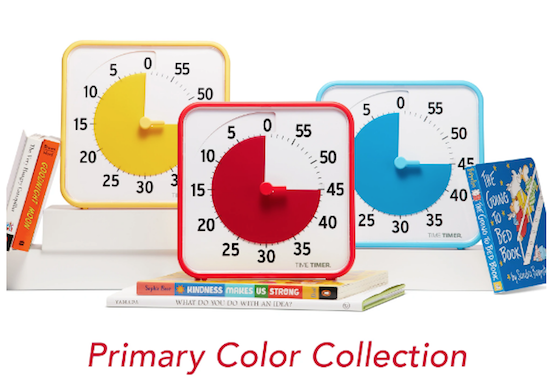
and a secondary color set:
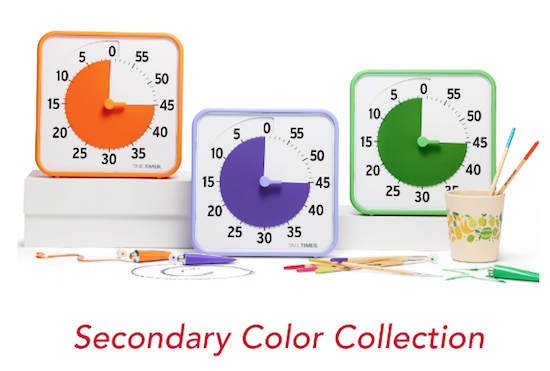
These sets are priced (for pre-order) at $104/set. Again, these are designed for learning activities, but there’s no reason why you couldn’t have one timer in your office, one in your kitchen, and one in your workout area.
Each set comes with three Original 8″ visual timers (for up to a 60-minute duration) with magnetic backs and fold-up feet, three dry erase cards for labeling the current activity (great for helping you focus during a 25-minute pomodoro task), and one free download of the Time Timer Desktop App.
They’re also selling a Time Timer MOD® – Special Edition Tie-Dye version (for pre-order) for $36.95. I’m a big fan of the little MODs, and this 3 1/2″ square MOD provides a tiny pop of color while helping you visualize time passing, and keep you motivated to accomplish your tasks.
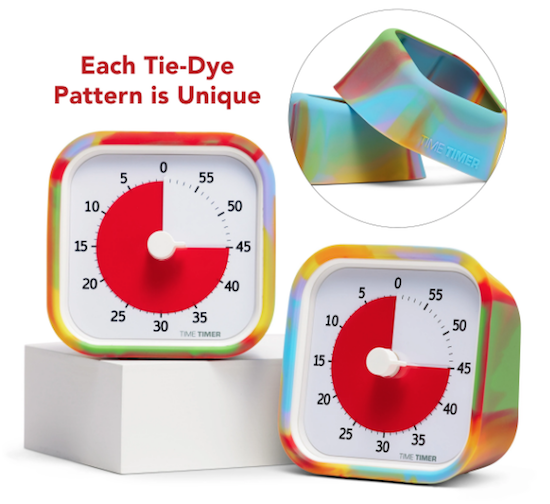
For a burst of color for office supplies, consider Poppin desk, wall, and office accessories:
You can buy their products directly from the Poppin website, or at Staples, Quill, and The Container Store. Be sure to check out Poppin’s Work From Home section for more fun, motivating bursts of color.
Do you like to wrap yourself up in color or just use it for accents?
Are you comfortable with intricate color-coding systems, or do you just want to surround yourself with your favorite hues?
And what’s your favorite color?
Meet me in the comments and tell all!
Paper Doll’s 22 Ways To Celebrate GO Month 2022

Welcome to GO Month 2022! This is the annual celebration of our attempts to eliminate chaos and help our world make a little more sense. For members of the National Association of Productivity and Organizing Professionals (NAPO) this is our 4th of July, New Year’s Eve, and pretty much every other holiday all rolled into one. We invite you to celebrate with us!
Chances are good that when you read last week’s post (you did read last week’s post, right?), Review & Renew for 2022: Resolutions, Goals, and Words of the Year, you strengthened your resolve (if not actual resolutions) to get organized, be more productive, or do something to further your dreams. Today, we’re going to look at 22 tips to start 2022 in ways to help you get closer to your dreams.
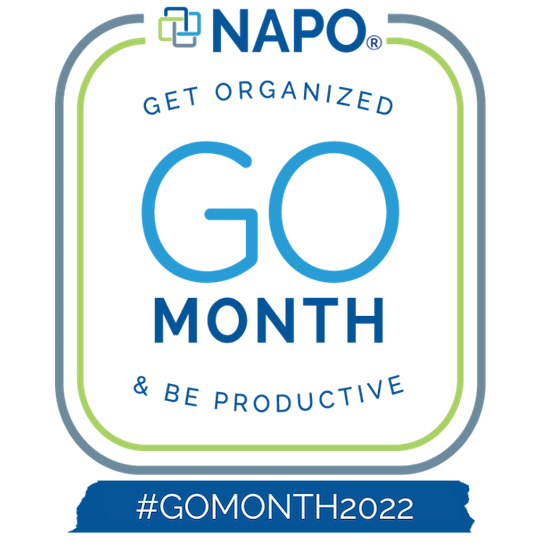
CLOSE OUT THE HOLIDAY SEASON
1) Purge your holiday cards. While you’re taking down the tree and putting away decorations, collect all of the greeting cards you’ve received in one pile and do a reality check. So many people save all of their cards, boxed up, and never look at them again. Not you, not again.
Read the cards one last time. If Hallmark did all the labor and there’s only a short message or a signature, give yourself permission to toss and recycle the cards. If there’s no deeply personal message that makes you laugh or cry, let it go. After all, you don’t transcribe your holiday phone conversations and keep them forever.
2) Let go of other people’s greeting card pictures. And those cards that are just collages of the families of people you worked with 20 years ago? You’re allowed to let them go, too. You don’t have to be the curator of the museum of other people’s family photos.
3) Update your contacts. As long as you’re tossing holiday cards, check the return addresses on the envelopes and update the information in your own personal database, whether that’s in the contacts app on your phone or in an ancient Snoopy address book.
PICK AND PREP YOUR PLANNER
4) Buy your new planner. Now. And then make a note to buy your 2023 calendar by Thanksgiving next year.
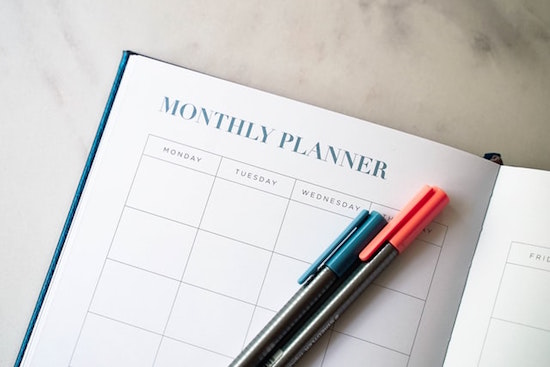
Are you still scribbling appointments on those extra, orphan, three-lines-per-month “planning” sections at the back of your 2021 planner? If you don’t have a planner that will make sure you honor all of your commitments, now is the time to do it! Consider these concepts:
- Choose a planner that lets you see a month at a glance. Daily and weekly views don’t offer enough long-range details to let you plan your life over time.
- Select a planner that has enough space for you to write. Paper Doll has sprawling, messy penmanship, and I know a pocket-sized paper planner would cramp my style, literally and figuratively. Note that even when you’re looking at a monthly view, digital calendars tend to hide most of the details.
- Use only one planner for your business and personal appointments. If you keep one calendar for your doctors’ appointments and schedule for your kids, and another for work, you’ll never know if your child’s recital conflicts with a major client presentation, or if you’ve scheduled yourself to attend a work conference the week your kids have school vacations. I’ll admit this is where digital calendars like Google’s have an advantage, as you can, with the click of a box, layer or remove different calendar views.)
As a professional organizer, I think the key to organizing your life is being able to visualize your time, whether that’s the hours in the day or the projects in the year. As Paper Doll, I think the best way to do that is with a paper planner.
But if you’re a digital devotée, you do you! However, a digital calendar makes it a little harder to flip back and forth between last January and this one, last February and this one, etc., to make sure everything is as it ought to be. (Yes, in a perfect world, you’d put people’s birthdays in as recurring dates and meetings that used to be every 2nd Tuesday would continue thusly, but with digital planners, there’s a lot of extra fiddling to do to make sure things don’t fall through the cracks.)
5) Update your calendar by filling in all the details.
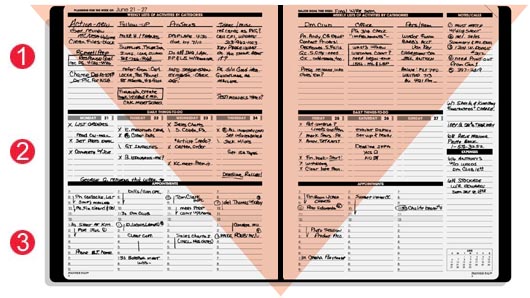
Go through last year’s planner and copy over everything that recurs on the same dates (like birthdays and anniversaries).
Then add in the things that happened last year and are already scheduled to happen again, but not on the same dates (like conferences, work retreats, mammograms, medical appointments, etc.).
6) Use last year’s calendar to help prompt you to make a list of everything you need to schedule or add to your long-range tasks, like setting an appointment with your CPA to discuss tax issues.
7) Commit to a planner system. Commitment to your calendar is like having Jeeves as your butler. If you pay Jeeves poorly (and try to use a 12-page stapled calendar from a local funeral home) or don’t feed him (and forget to enter your appointments as you schedule them), such neglect will yield one insolent, neglectful butler (or a calendar of conflicts, illegible notes, and missing appointments). Not every butler is as loyal as P.G. Wodehouse’s Jeeves or Downton Abbey’s Mr. Carson.

Nurture your commitment to your planning system…every day. If there’s so much going on in your life that you forget to mark appointments in the first place or fail check your planner until it’s too late, upgrade your accountability:
- Set an alarm on your phone to ring at around 5 p.m. daily to remind you to check your calendar and tickler file for the next day and the coming week.
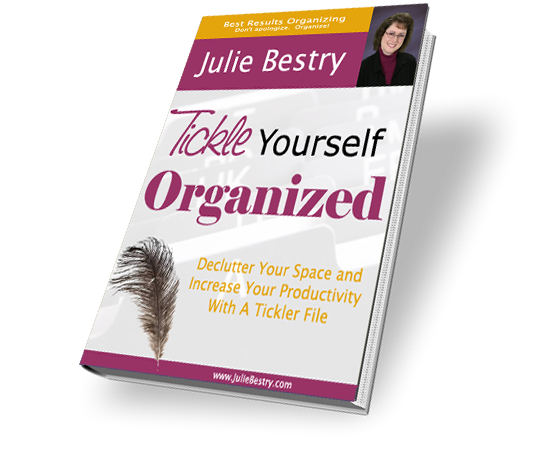
- If you have an assistant (especially if you are both working remotely) schedule time each day to talk and review newly-added appointments and obligations.
- Have a family meeting on the weekend to make sure every appointment and school pick-up is covered.
- Schedule your next appointments before leaving anyplace you visit intermittently (doctor, dentist, massage therapist, hair or nail salon, etc.) — but only if you have your calendar with you. Otherwise, ask them to call you. Never agree to any date without your planner nearby.
MAKE 2022 THE YEAR YOU YOU ARE A VIP WITH YOUR VIPs
8) Get your vital documents in order.
Longtime readers know how I feel about making sure you have all of your VIPs (very important papers) in line. From tornados and hurricanes to the recent wild fires in Colorado to everything the world has experienced with the COVID pandemic, it’s never too soon to get your papers (and affairs) in order. Check in with these posts for step-by-step guidance to making sure you’re covered.
How to Replace and Organize 7 Essential Government Documents
How to Create, Organize, and Safeguard 5 Essential Legal and Estate Documents
The Professor and Mary Ann: 8 Other Essential Documents You Need To Create
Protect and Organize Your COVID Vaccination Card
9) Clean out your wallet and make an inventory.
It’s been a long time since I wrote my creaky 2008 series on what you should and shouldn’t keep in your wallet, but the advice in What’s In Your Wallet? (Part 3): A Little Insurance Policy boils down to the fact that you need to keep an inventory of the licenses, insurance cards, and debit/credit cards you have in there and all the information contained on them.
Back then, I advised wallet protection services, photocopying or scanning the fronts and backs of your wallet contents, or logging a digital database in a spreadsheet. Nowadays? Unless you have a scanner at hand, just pull everything out of your wallet, make two columns of cards on the table, and take a photo with your smartphone. Then flip each card over in the same position, and photograph the back. Finally, password-protect the document on your phone or in your cloud back-up, secure in the knowledge that your info is safe.
MAKE SENSE OF YOUR MONEY, HONEY!
10) Create a Tax Prep folder.
If you do nothing else this month, setting aside a safe place to collect tax information will at least prevent essential financial paperwork from building up or getting lost. You’ll save time (in CPA or TurboTax hours) and money (in CPA dollar-hours and tax deductions).
Starting near the end of January and continuing through mid-February, your mailbox, email inbox, and digital financial accounts will be filled with lots of weirdly named and numbered forms. (For some idea of their significance, review Paper Doll’s Tax-Smart Organizing Tips: 2021, though this will be updated once the IRS releases more information for the new tax year.) Just pop them in a manila folder in your financial files or in a dedicated holder like the Smead All-in-One Income Tax Organizer.
Review & Renew for 2022: Resolutions, Goals, and Words of the Year

Snuggled in this week, tucked away between two major holidays, it’s tempting to rush to end the year with some sense of completion on those unfinished tasks. As much as we’d like to be mindfully in the present, we’re zipping along, trying to impose control in an era when there’s very little control to be had.
So today, I propose you take a breather. Bask in the quiet glow before we rush headlong into the future. Take time to do a little review of the past year so you can feel renewed, and if not in control, at least in awareness, for 2022.
TAKE A BACKWARD GLANCE
The best way to grow is to built on one’s successes. Grab a cup of cocoa (or whatever makes you feel alert but cozy) and settle in someplace comfy.
Pull out your calendar, whether it’s digital or paper bound, and start taking note of your successes, achievements, and delights. Personally, I think it’s best to keep a running list on paper (I mean, I am Paper Doll, after all), but if you prefer a spreadsheet, Word doc, or a note in Evernote, by all means, go with what feels comfy.
Look Beyond the Obvious
You can definitely list big accolades, awards, or milestones. Sure, mark down when you hit your revenue goal or finished that marathon. But look at those subtle successes, too.
What did you stick with, even when it was hard? Success isn’t always marked by what you attain, but how you persevere!
What did you try, even though it was out of your comfort zone? Succeeding at what you’re good at is worthy of pride, but stepping up to do something scary but potentially rewarding? That’s magical. (For more on that, check out my Sara Skillen’s Organizing and Big Scary Goals: Working With Discomfort and Doubt To Create Real Life Order.)
What surprisingly good things occurred that you had never even thought to imagine in the first place?
What dreams came true? Where did you decide to make new dreams when the old ones proved untenable (due to life or world circumstances)?
Janet Barclay’s excellent Set Your Compass to Reach Your Goals for the New Year introduced me to the free, downloadable YearCompass, an international marvel. Even if you get nothing else from today’s post, I encourage you to download this fillable, printable PDF and explore the questions. Examine your past year and get guidance for going forward.
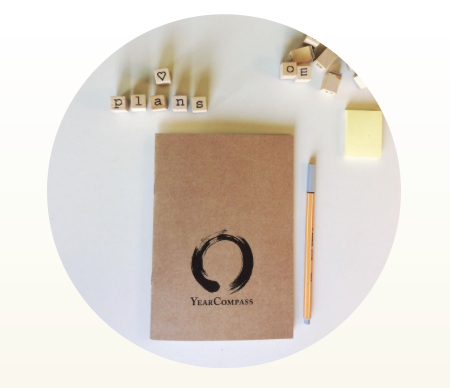
I’m working my way through the digital version now, and it’s providing more insight than I’ve received from any prior annual review.
If you prefer an even deeper dive (and are willing to use up lots of Post-its®), try doing a life audit, examining the past, present, and future of your life. Or go shallower, cut to the chase, and stick to Apartment Therapy’s 6 Smart Questions to Ask Yourself at the End of the Year.
Not everyone can weave a tapestry of the past year out of the blocks of a calendar, so this is just a start. If you journal, flip through the pages to look for highlights, and recognize that bad days are actually achievements. You got through them and made it through the other side. (You’re here to read this, right?)
Surf through your social media posts. You may be surprised by what you find on LinkedIn or Facebook (or, yes, TikTok or Instagram). Look for a sense of all the big and little ways you did your thing, or helped others do their things! In particular, look at places where you were tagged for shoutouts and gratitude. There are lots of people always touting having gratitude, but sometimes it’s nice to notice and remember when you did something worthy of someone else’s gratitude or kudos.
Ah, kudos! Speaking of which, definitely check your Success Folder! Don’t have one? Create one! Actually, create two.
Have a digital success folder where you put emails that praise or thank you, or otherwise give you warm fuzzies. While you may get fewer and fewer things by mail, have a paper folder for collecting such tangible high-fives. On days where you are down on yourself, feel under-appreciated, or are disappointed, pulling out something that reminds you that “good stuff happens” and that you’re part of that chain of events is going to lift your spirits.
Engage With Your Village
Raising a child isn’t the only thing that takes a village; count on others to help lift your spirits and give you insight.
Talk to your people. We’re not always good at keeping formal records of our successes, but our friends and loved ones automatically catalog the snazzy things about us. Once, a friend was entering the workforce for the first time in decades, and was bemoaning the fact that she had no marketable skills. But because I’d known her (just about) forever, I was able to recite everything from events she’d run as a volunteer coordinator to the time she caught a PTA high muckety-muck embezzling! She sure-as-heck had marketable skills, but couldn’t immediately see them in herself, let alone recognize her own magnificence.
Want to increase the magic? Recognize your own successes, but also pay attention to your friends’ and colleagues’ achievements. Share their blog posts on your social platforms instead of just clicking “like.” Promote their professional highlights. And send them emails and even write to them the old-fashioned way so they have something to put in their own Success Folders!
MOVING FORWARD: TRIED AND TRUE FOR ’22
Armed with insight into what we achieved (and what we wish we had tried) in the prior year, we can approach the new year. First, we’ll look at the classic approaches, but we’ll also examine some exciting new ways to support our dreams as we move forward into 2022, even if it’s about to be “COVID’s junior year.”
Resolve to Evolve
In general, New Year’s resolutions come in two flavors, either positive or negative.
With positive resolutions, we say we’re going to proactively do something. Maybe we’ll do Couch-to-5K or learn a language. For negative resolutions, we plan to eliminate some aspect of our lives that we know is dragging us down, so we vow to go on a diet or stop hate-watching The Bachelorette.
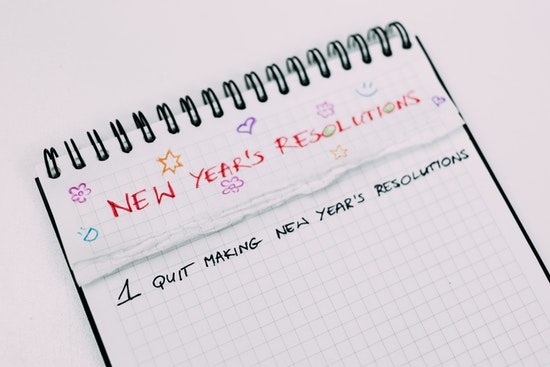
Photo by freestocks.org from Pexels
Resolutions date back many, many centuries. Four thousand years ago, the Babylonians promised the gods they would return borrowed objects and repay outstanding debts. (If only the Babylonians had had professional organizers to help them declutter and locate the borrowed stuff and couch cushion money.)
The Romans promised their two-faced god Janus, who looked simultaneously backward and to the future, that they’d be good in the year to come. And for several hundred years, Christian watch night services have included traditions of reflecting on the prior year and making resolutions for the one to come.
In the United States, resolution-making continues to increase; up to 40% of the population makes a New Year’s resolution. On the up-side, these resolutions help us start the new year in a motivated, positive way – right when the weather, the amount of sunlight, our bank balances, and our moods are at an annual low-ebb. December 31st is when we feel our age and recognize the passing of another year of unfulfilled potential; resolutions rev our engines.
On the down-side, the vast majority of people abandon their resolutions before February. Resolutions fizzle for three reasons:
- our real lives get in the way (year after year after year)
- our resolutions may be things we’re supposed to do, but aren’t passionate about
- we haven’t identified working strategies for achieving our resolutions
So, if you are going to make a resolution, make sure you’re picking things that excite and challenge you, but also figure out how to eliminate the past obstacles and ease your path.
For inspiration on developing new or different resolutions, consider some of the following:
Good Housekeeping‘s 60 Achievable New Year’s Resolutions for Healthier and Happier Living 2022 has less all-encompassing, more bit-sized resolutions, like “Prioritize age-appropriate health screenings,” “eat more vegetables,” and “listen to novels while you work out.
The Pioneer Woman has 40 New Year’s Resolution Ideas to Start 2022 Right, with some fun, sociable ideas like “give more compliments,” “send more cards,” and “make time to spend with family and friends.”
And Antimaximalist’s whopping 67 New Year’s Resolutions for 2022 prioritizes hopeful notions like, “Don’t settle for less than you deserve” and “Be less afraid of making mistakes.”
You can resolve to do things that are fun, too. Gretchen Rubin made a list of 21 things she wanted to do in 2021:
Here’s my 21 for 2021 list. I got a fair number of things crossed off my list. Now I’m writing my 22 for 2022 list—and deciding what items to carry over from 2021. pic.twitter.com/KmdMXUBAPu
— Gretchen Rubin (@gretchenrubin) December 21, 2021
and has a PDF to help you track your 22 in ’22.
Embrace Good Goals and Happy Habits
So, how can you supercharge your resolutions? Maybe stop thinking of them as big, sparkly things you resolve to do (with the unspoken societal expectation that it’ll all fall through), and consider the less flashy younger siblings of resolutions, ye old goals and habits.
Think of goals as providing the big-picture framework, the big city markers on the map; habits are the turn-by-turn directions to get you where you want to go.
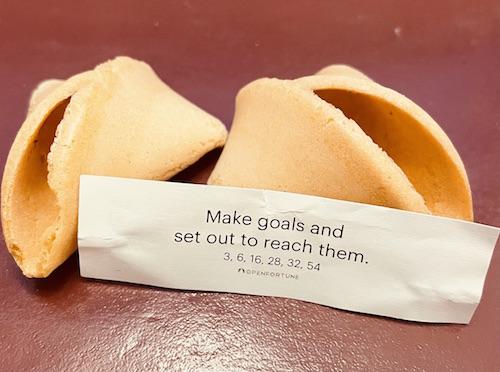
SMART goals are popular because they identify where resolutions and plans often fail.
- Specific (What are you going to do? Use action verbs! Where and when are you going to put these efforts into effect? With whose help or partnership will you get there?)
- Measurable (What metrics will you use to show you’ve done what you said you’d do? How many miles per day? How many lessons per week? How many blocks of time for achieving specific tasks?)
- Achievable (Is this a practical goal? Is it realistic?)
- Relevant (Does this goal make sense for your life, family, or business?)
- Time-based (When will you start? When will you perform the action? When will you repeat it? When will you finish? Remember, “Someday” is not a day on the calendar!)
And Paper Doll readers know that I prefer SMARTY goals, where that Y reflects the idea that these are goals that are meaningful to YOU, not your mother-in-law, boss, or favorite Instagram influencer.
I prefer SMARTY goals, where that Y reflects the idea that these are goals that are meaningful to YOU, not your mother-in-law, boss, or favorite Instagram influencer. Click To TweetWhether you want to lose weight, pay off debt, find a significant other, or grow your business, the goal can’t just be a vague “what I want” without any guideposts. Make sure your goals spell out what you’re going to do, how you’re going to do it, and how you’re going to measure your success.
So, if your goals set the rules and create the game plan, habits are how you get to the finish line.
If your goal is to get to work on time every day, but you often find yourself searching the house for your keys, wallet, phone, and charger, then you’ll want to develop a habit of assigning a “home” and always putting those items in the home upon returning to your house, before you even take off your shoes. If your goal is to be prepared at tax time, then your habits involve doing weekly record-keeping and filing, and not waiting until April 12th to get started.
Habits are your settled or repeated tendencies. Sure, bad habits become second nature, making them hard to break, but good habits are hard to break, too! So, if you can get in the habit of repeating positive, life-affirming tasks, you stand a much better chance of achieving your goals.
I recommend a few superior books for understanding how habits work, and how you can put them to use in your life. Both are becoming modern classics.
Paper Doll’s Holiday Gift List: Education, Entertainment, and Adventure

A good gift should be so much more than “stuff” that you end up having to dust or dry-clean, store or maintain. Over the past weeks, we’ve looked at clutter-free gifts in a variety of categories.
Holiday Gift List: The Useful and the Beautiful looked at practical gifts to help your recipients achieve their goals, be more productive, and get (and stay) organized. We also talked about how beautiful gifts uplift, support, stir action, lower blood pressure, and drive delight.
Paper Doll’s Holiday Gift List: Warm Their Hearts and Fill Their Tummies focused on two particularly categories, those dealing with yesteryear (family genealogy and legacy) and those to enhance the here and now. (Be forewarned, we’re not done with gifts of food, glorious food!)
Today, we’ll close out the gift ideas with gifts of experiences. Many researchers, including Thomas Gilovich, the Irene Blecker Rosenfeld Professor of Psychology at Cornell University, have found that the enjoyment we get from experiential purchases far exceeds that of tangible items.
First, there’s the anticipatory aspect. When we think about what we will be experiencing, our imaginations fill in the details in a way that makes thinking about tangible items pale in comparison. While this has mainly been studied in terms of things we buy for ourselves, it stands to reason that things given as experiential gifts are endowed with that same anticipatory delight between when we get them and when we get to use them.
But there’s also a retrospective aspect. When we compare our “stuff” to someone else’s “stuff” (my iPad to your iPad, or even to your Surface; my sports car to your sports car) there’s little joy to be had. If what I have is inferior to what you have, it lessens how I feel about what I have, even if I loved mine before comparing it with yours. And if mine is better than yours, well, the excitement doesn’t last. It’s just a thing. And very few tangible things retain their charm after weeks or months or years.
However, it’s almost impossible to compare different experiences (yours vs. someone else’s) because there are so many relative differences. You can, at best, compare your memories of your trip to Italy with someone else’s memories of their own vacation, whether to the same places in Italy, or perhaps to other locale altogether, but you’re far less likely to compare and feel your own experience to be unfavorable. Experiences, like the one who does the experiencing, are unique.
So, what experiential gifts can you provide to those on your gift list?
EDUCATION
The alternatives for gifts of education are almost endless, and you can choose experiences that benefit either the body or the mind (or both).
For example, I love Jane Austen. I’ve read all of the novels many, many times, and I’ve read many books about the author, herself, and others offering up critical analyses of her writing. I can’t get enough. So, for my birthday this year, at the start of what I’ve been hearing called “the sophomore year of the pandemic,” my friend got me The Great Courses‘ set of lectures on The Life and Works of Jane Austen.
It was just what I needed to burrow in for those last few weeks until spring (and vaccinations) had finally sprung. Instead of feeling like someone seeking one more Netflix show to binge, I felt like a college student (and trust me, for Paper Doll, that is a very good thing).
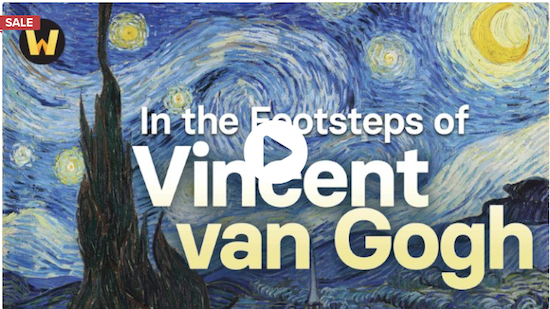
Options from The Great Courses include: economics and finance, history, literature and language, philosophy and religion, music and fine arts, mathematics, and so much more. You can learn Spanish or how to draw, take a grand tour of England, Scotland, and Wales, or understand behavioral economics (and then please, try to explain it to me). From Dog Training 101 to Law Training for Everyone: Constitutional Law, you should be able to delight every adult on your gift list.
The Great Courses does offer their Programs for Young Learners courses, but these tend to be focused on high-school-aged learners; unless you’ve got a Young Sheldon on your list, get the young’uns the games and toys they’ve been craving. (Clutter-free gifts have less meaning to tiny humans!)
If you’d like a sample of the kinds of material you can find in The Great Courses, their Wondrium YouTube channel (formerly Great Choices Plus) offers free video tastes.
Courses are offered on DVD sets and online as “instant” audio or video, and are priced anywhere from $29.95 upward. (This week, all courses are on sale and there’s a 15%-off coupon code: K5H9.)
Another popular choice of course purveyor, one with a less academic bent, is Master Class. It’s hard to surf anywhere on social media or YouTube without seeing a promotion with Ron Howard, Alicia Keys, Neil deGrasse Tyson, or Neil Gaiman. However, in case you’re unfamiliar, MasterClass is a streaming platform where your recipients (or you!) can watch or listen to hundreds of video lessons taught by 100+ of the world’s best in their fields.
Categories of courses include business and leadership, filmmaking and screenwriting, acting, photography, cooking, music, sports, science and technology, government, and more. These classes are less like academic coursework and more like getting to sit in on a series of mentoring classes with recognized experts.
Because these are digital/video lessons, the material is available whenever your giftee has time to watch, and wherever it’s convenient for them: smartphone in the carpool lane, tablet while cooking, computer during a lunch break, or via Apple TV and FireTV streaming media players.
Master Class offers three annual plans: Standard, Plus, or Premium (at $30, $40, and $46/month, respectively, though right now they’re offering a 2-for-1 holiday special). The main difference is the number of devices you can be using simultaneously (1, 2, or 6, respectively), and if you’re using the Standard plan, you can’t download the courses for offline viewing.
So, whether someone on your list wants to learn mindfulness from Jon Kabat-Zinn or philosophy from Cornel West, cooking from Gordon Ramsay or how to hit a high note from Christina Aguilera, there’s something to excite and charm.
But I get it. Not everyone wants to feel like they’re sitting in the front row of a college seminar. Some want the experience of learning by doing. That’s OK, because educational options run the gamut; if you can imagine learning it or doing it, there’s someone or some place that’s teaching it.
Cooking & Food
Google “cooking classes” and the name of your recipient’s city, and chances are good that there will be classes taught at local restaurants, culinary schools, community colleges, and cooking supply stores.
If your recipient is in New York City, Chicago, Boston, Los Angeles, Las Vegas or Dallas, consider Eataly. They offer classes and special events ranging from straight-forward cooking classes for adults and children to market tours where you can learn where the experts go, from butcher to baker.
However, if your gift is for someone who lives far from these kinds of courses or is wisely, cautiously waiting out the next surge in the pandemic, private classes by Zoom or Skype may be an option, locally or at a distance.
While Sur La Table, maker of fine cookware, is better known for their in-store classes, they have a nice schedule of online course options starting at just $29/household. Would your culinarily-inclined friend like to learn how to make a Salted Caramel Lattice-Top Apple Pie? What about the Feast of the Seven Fishes (pictured below)?
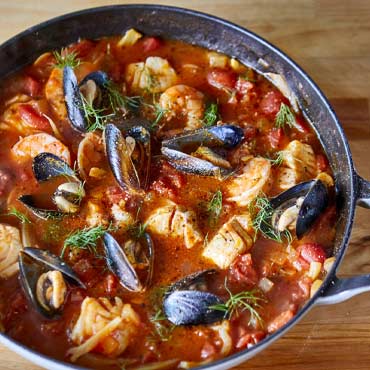
Might they be interested in a 2-day croissant workshop or learning how to make traditional tamales? Each live 90-120 minute class is taught by experts via a password-protected Zoom session, so you (or your giftee) and the other attendees are free to ask questions as you follow along step by step.
League of Kitchens describes itself as is a “culinary dream-team of women from around the world who will welcome you into their homes, teach you their family recipes, and inspire you with their personal stories.” Their online cooking classes include an interactive cooking instruction session, a virtual dinner party, a packet with the instructor’s family recipes, and a video recording of the class.
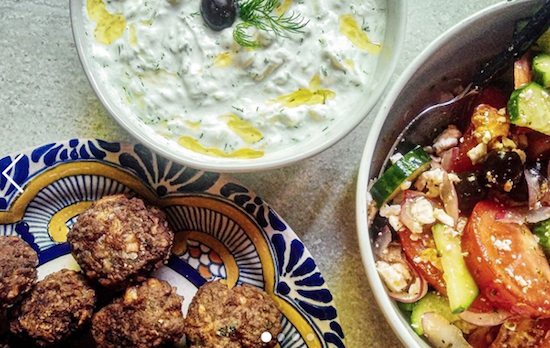
International cuisines represented include Afghan, Argentinian, Bengali, Greek (nomnomnom), Indonesian, Japanese, Lebanese, Mexican, Nepali, Persian, Russian, and Uzbek. Classes are $60/device, and you can buy gift cards for recipients to use for the cooking course of their choice.
Goldbelly Live! Cook-Alongs offer a combination gift. You buy GB’s meal kits and the Goldbelly Live! cook-along classes are included. It’s live via Zoom, so you get to ask the chefs questions as you cook with the ingredients that arrive (the day before) in your meal kit. From pizza to dumplings to cookies, class-and-kit combos tend to range from $99 to $159.
Want to give a more intimate cooking class experience? The Chef & the Dish offers private classes with “white glove” service. Pick your course by mood, dietary preference, or craving — options include homemade pasta, Pad Thai, paella, ceviche, jambalaya, baklava, goulash, curry, and more. Once you book, a Kitchen Assistant makes contact to host a personal Kitchen Prep Session to check the camera settings, review the shopping list, and answer any pre-class questions.
For more online cooking class ideas, check out The Spruce Eats’ post, The 8 Best Online Cooking Class of 2021.
Maybe the loved ones on your list, like Paper Doll, love to eat but aren’t such fans of actually cooking? In addition to the gifts I covered in last week’s post, consider experiential gifts like food tours. To find tours to give as gifts, check Google for your recipients’ hometowns or wherever they tend to visit (like where their parents, in-laws, or adult children live).
There are also national food tour companies, with operations in multiple cities. One option is Secret Food Tours, with domestic and international tours that blend food and culture. Gift vouchers can be used for group or private tours.
Similarly, winery and brewery tours might be just the surprise your recipients might enjoy.
Lest you think Paper Doll only has food on the mind, there are still more educational classes and tutoring you can give as gifts of experience, including:
- Music lessons
- Singing lessons
- Self-defense courses
- Physical education classes — Forget old-school PhysEd; you can gift your loved ones gym memberships in-person or online on-demand classes like at Obé Fitness. From aerobics to yoga, there are in-person and virtual classes for everyone on your list. Or, instead of a specific class, perhaps private fitness coaching sessions might please.
- Dancing — From ballroom to ballet, tap to jazz, if you know someone who loves to dance but might not think to buy lessons for themselves, this might be a dream come true.
- Horseback riding
- Driver’s education — Local school districts have pared down their offerings; those that do offer Driver’s Ed often have four kids (and an instructor) to one car. For teens or adults, a package of driving lessons can help give the twin gifts of driving skills and confidence.
ENTERTAINMENT
As with last year, the COVID pandemic has made the choice of entertainment gifts somewhat problematic. Experiential gifts that entertain are still a great choice, but tickets to date-specific events can turn delight to dismay if there’s a cancelation. (This week alone, ten different Broadway shows and many musical performances around the country had to cancel. This weekend’s Saturday Night Live went on, but barely, with only two cast members, minimal crew, and no audience. Buyer beware.)
So, if you and your giftee are bold and willing to brave the possibility of cancelations and rescheduled events, consider experiential gifts like one-off or seasons tickets to:
- Sporting events — Hint: outdoor sports are somewhat less likely to be canceled
- Concerts — From your giftee’s favorite band to a night at the symphony, there’s a reason that the quote, “Music hath charms to soothe the savage breast” has stuck around since 1697!
- Comedy clubs — because we could all use a reason to laugh these days
- Academic lecture series at local universities
- Theater — Don’t limit yourself to big-city theater performances. Consider local community theaters, universities, and even high school schedules for their musical and entertainment offerings. From a booklet of movie tickets to a big theatrical show, your recipient’s memories will live on after the big holiday night or Christmas morning.
Thanks to technology, and specifically streaming services, you can give experiential entertainment gifts that last the whole year.
Start with the big platforms for TV. Get someone a gift of three months ($39) or a year ($119) of Amazon Prime, which along with all the other great benefits (including fast shipping), they’ll get a variety of original and beloved entertainment on Amazon Prime Video.
If they already have Prime, look to the other obvious options. Buy them a gift card for Netflix, or a monthly or yearly subscription to Hulu.
Instead of one of the big platforms, you could get them AppleTV+ for classics and original shows (including the absolutely hilarious and life-affirming Ted Lasso), Disney+ (for friends with kids or fans of Marvel movies), ParamountPlus (previously CBS All-Access, for those who love all of the Star Trek shows, and for fans of CBS programming, including NFL on CBS).
Some niche networks (like Acorn or BritBox for fans of shows from the UK) can be purchased directly or as sub-subscriptions through Amazon Prime Video. Because almost any streaming service offers a gift option, whatever kinds of viewing your giftees like can be delivered directly to them, wherever they are.
If the folks on your gift list are music fans, a Spotify Premium gift card for three months or a year is the obvious first choice.
For giftees who spend a lot of time in a (compatible and fairly modern) car, a pre-paid SiriusXM gift card is a fun choice for a ridiculously wide variety of streaming music, news, sports, and talk. (I’m a fan of their Radio Classics channel, which plays old radio shows from the 1930s, 1940s, and 1950s, everything from noir to comedy, westerns to music.) And did you know that if you have a SiriusXM account, you can also play the stations in your computer browser? That’s a fun option even for those who don’t have cars!
Do you have movie fans on your list? If they’ve already seen everything on the TV streaming services, consider some of these more niche options.
Metrograph bills itself as, “the ultimate place for movie enthusiasts to experience prestigious film and content. Metrograph represents a special, curated world of cinema, harkening back to the great New York movie theaters of the 1920s and the Commissaries of Hollywood Studio back lots, a world inhabited by movie professionals screening their work, taking meetings, watching films, and collaborating together.”
A $50 gift membership includes Metrograph At Home, with live streaming events, special premieres, exclusive films, conversations with favorite filmmakers, and more. Members in (or visiting) New York City also get discounted tickets at the Metrograph Theater there. (Stream Metrograph via any Roku, Fire TV, Android TV, Apple TV, Google TV and Chromecast.)
If someone on your list is a super-serious cinephile, The Criterion Channel might be your best bet, with gift subscriptions at $10.99/monthly or $99.99 for a full year. Criterion brings your movie buff one thousand “important” classic and contemporary films, plus a constantly updated selection of Hollywood, international, art-house, and independent films from major studios and independent distributors.
And if the folks on your gift list prefer the stage to the screen? To keep them entertained all day and night, whether they prefer Shakespeare or ballet, absurdist theater or Sondheim, consider a monthly or annual gift subscription to BroadwayHD, ranging from $11.99/month to $129.99/year.
ADVENTURE
Adventure is in the eye of the beholder. For Paper Doll, Paper Mommy, and our ilk, adventure should be climate-controlled and have clean restrooms nearby. Over Thanksgiving weekend, we went to a Knight’s Quest-themed escape room.

For us, it was the perfect kind of “adventure,” as we didn’t need to buy a special wardrobe, and neither our hairdos or our bodies were ever at risk. As a private group (to better assure pandemic-era safety) we solved puzzles and laughed a lot!
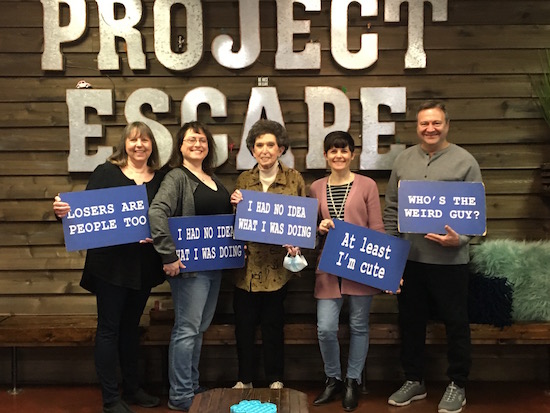
We went to Project Escape in Marietta, Georgia, but almost every community has a few escape rooms these days, so you shouldn’t have to look beyond your nearest search engine.
Want a physical adventure that gets your heart pumping without having to set out into the woods? A recently exploration of my own city found that axe throwing is a thing! (Who knew?) In fact, we have three different axe throwing venues within 15 minutes of my house!
I’m not sure I could lift one of these, but apparently you get one hour in a lane with a target at the end…and an axe! It certainly does seem like a great way to get out frustration, so if you know someone who is feeling more “grrrrrrr” than “fa la la la la,” this might be their style. (Google “Best Axe Throwing Near Me” for your options.)
As always, adventure gifts depend on your recipient and your budget. For real thrill-lovers, zip lines and hot-air balloon rides might be just the thing. Your more athletic friends might prefer sporty adventures; for a reasonable gift, time in the batting cages or pre-paid rounds of golf might work, but for a big-ticket present, you might opt for a week at fantasy baseball camp.
For car fans, a ride-along at the NASCAR Racing Experience program or Daytona Speedway course would be a gift to remember. But if they might prefer a less adventurous car adventure? DriveShare lets you rent a fun-to-drive classic car. Type in your zip code, search the auto options, and book! (You might want to make a gift certificate for your recipient and let them pick their own dream car.)

And while things are still all pandemicky, consider gifts that allow for adventures with a social distancing component, like an annual National Parks Pass ($80) to explore the country’s great natural beauty and experience some elbow room. (Note: annual passes for senior citizens are only $20, and a lifetime pass for seniors is $80.)

A pass is your ticket to more than 2,000 federal recreation sites. Each pass covers entrance fees at national parks and national wildlife refuges, as well as standard amenity fees and day use fees for a driver and all passengers in a personal vehicle at per-vehicle fee areas (or up to four adults at sites that charge per person). Kids age 15 or under are admitted free.
ONE LAST THOUGHT—ON PRACTICALITY
Over the past three posts, we’ve looked at gifts that are exciting and special in different ways. But bear in mind that some of the people on your holiday gift list might actually appreciate practical gifts. No, not a vacuum cleaner or a toaster (unless they’ve really, really requested one for the holidays). But sometimes, a gift of something to make life easier really is a special present.
Drivers on your “nice” list would benefit from gift certificates for oil changes, car washes or detailing, and even annual memberships in AAA or their favorite auto club. Unlike the streaming entertainment services mentioned above, you generally can’t purchase a gift certificate for multiple months of internet, cable, satellite, or cellular service but you could gift your recipient cash earmarked for pre-paying those services. (If your recipient is in college or just out of school, this might be especially appreciated.) And if you really want to be a hero, you can definitely give the gift of computer backup services. (I’m a fan of Backblaze.)
Just because something is practical doesn’t mean it won’t be loved. As always, you have to really know your recipient.
Whatever you give (and get) this holiday season, I hope you have healthy, happy times with the people who mean the most to you! Happy holidays from Paper Doll!
Paper Doll’s Holiday Gift List: Warm Their Hearts and Fill Their Tummies

Happy almost-holidays. Maybe you forgot to get someone a gift for Hanukkah. (It’s been over for a week.) Perhaps you’re still trying to figure out what to get that special someone for Christmas. Either way, it’s the middle of December, and while some things are easily delivered by Santa’s elves at UPS, other orders seem to be flummoxed by the global supply chain troubles. (FYI, though, that cream cheese shortage that filled the news last week? Turns out cyberattacks and not worker shortages or cargo ship kerfuffles played the major role.)
Last week, we looked at Paper Doll’s Holiday Gift List: The Useful and the Beautiful. Those were tangible but clutter-free (or clutter-reducing) options. Maybe it warmed you up to look beyond tangible gifts that have to be wrapped, dusted or dry-cleaned, and carefully stored.
Are you ready to think bigger (no, not in terms of gift box sizes) and brighter? How about gifts that make people’s lives better and bolder without fear of generating clutter?
Today, we’re looking at holiday gifts your loved ones can enjoy all year. These gifts can help warm their hearts (and the hearts of their family members) and fill their stomachs.
GIFTS OF FAMILY LEGACY
How much do you know about your family history? Do you think your friends and family members are curious (or might become curious) about theirs? After interviewing my colleagues for Paper Doll Interviews the Genealogy Organizers earlier this year, I found many readers and clients were intrigued about how they could learn more about who they “are” — genealogically as well as genetically.
If family history appeals to your gift recipients, you can definitely hire the services of a professional genealogist. If your loved ones like doing the DIY thing but are drowning in research and need to make sense of it, be sure to follow the links in the post above, to get to know some genealogical organizers (like Jennifer Lava, Janine Adams, and Hazel Thornton, whom I interviewed for the above post).
For other holiday gifts for those into the whole family legacy experience, consider these options:




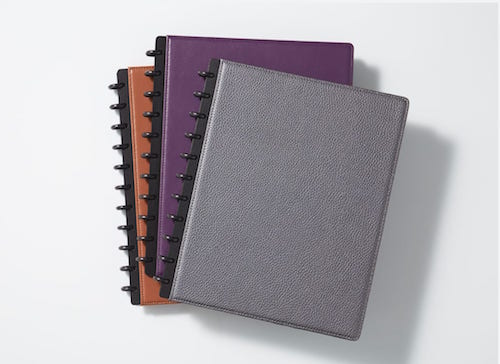

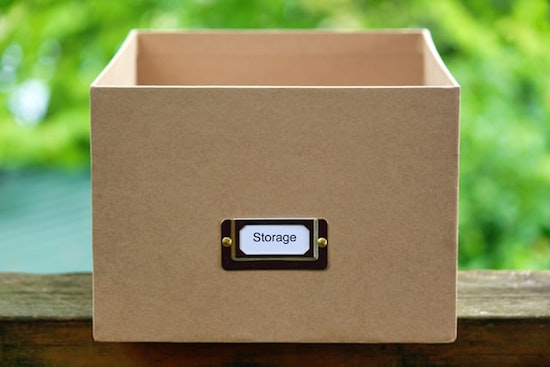








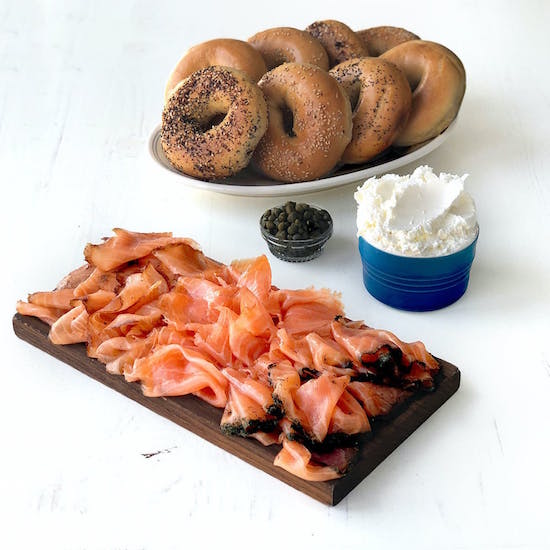
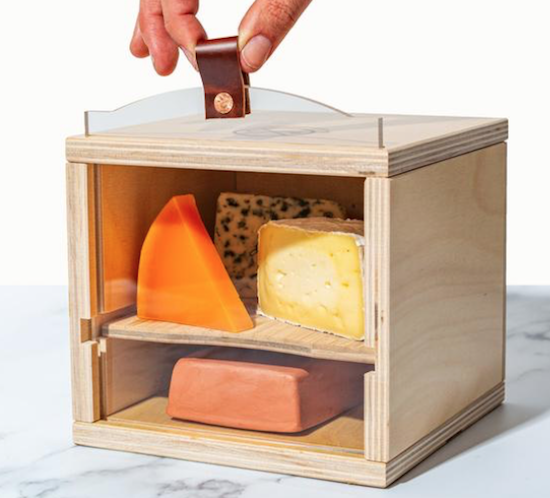



Follow Me